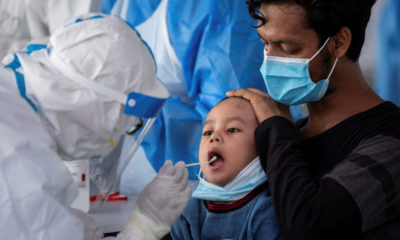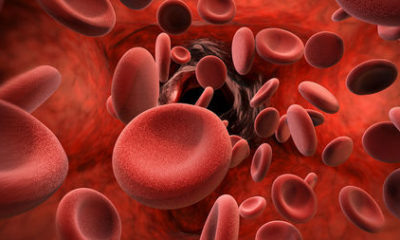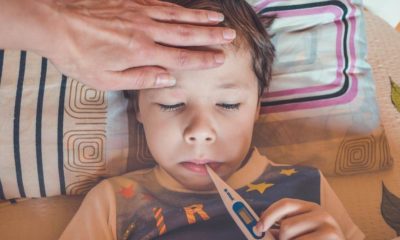Medical & Pharma
Mild Covid-19 Symptoms: Home quarantine, Pronal breathing and regular monitoring recommended

India’s battle with Covid 19 is ongoing. The daily caseload had exceeded the four lakh mark and many are fighting the infection at home. The second wave has hit us hard with people suffering from mild, moderate, and severe symptoms.
The panic about the increasing cases is making people rush to the hospitals even if they have mild or moderate symptoms leading to the unavailability of beds for the more critical patients. People need to understand that most Covid positive cases are mild or asymptomatic and do not require hospitalization.
These mild cases can be treated at home following the necessary protocols and precautions. Standard guidelines include:
- A covid positive patient needs to be kept under observation and isolation for 14 days after he/she contracts the infection.
- While some patients may not show any symptoms at all, a few might show slight fever, body ache, or breathing problems.
- The mild symptoms may take 3-5 days to progress to moderate. If the patient is vigilant about the symptoms, she/he can track the changes more carefully.
- With mild symptoms, one can opt for a home quarantine package from the hospitals availing regular teleconsultations with the doctors. This will help in understanding any changes in the symptoms or necessity to get admitted to the hospital.
How to identify if you have mild COVID-19 symptoms?
When a patient has mild COVID-19 symptoms, these symptoms may show in the upper respiratory tract, with or without fever and without shortness of breath. Another major factor is that they should not have hypoxia(shortage of adequate supply of oxygen at the tissue level).
Individuals can check this by using an oximeter and noting down the SpO2 levels. If the SpO2 levels are between 94-98 percent, then there is no need to worry. But if the levels fall below 94 percent, they need to reach out for medical assistance.
What should you do if you know you have mild COVID-19?
Isolate yourself at home. It is advised that you isolate in the room which has an attached toilet, as others at the home are not supposed to use the one which the infected person uses. Wear a mask at all times and change it after using it for 6-8 hours.
Keep in regular contact with your physician through teleconsultation and update him about your symptoms. He will generally prescribe hydration, antipyretic, antitussive, and multivitamin medicines to manage your mild symptoms. Keep a note of your body temperature and oxygen saturation levels.
Along with the medications it is advised to inhale steam twice a day. Always consume warm water and hot food. Avoid food that can aggravate cold and cough. Keep your body warm. Check with your doctor before you can do any exercises and follow breathing practices.
Pronal breathing
To improve ventilation and keep your alveolar units open, proning is recommended. It makes your breathing easier and is required by patients when the oxygen saturation level falls below 94 percent.
For proning one pillow has to be placed below the neck, one or two pillows below the chest region through the upper thigh and two pillows should be placed below the shins. Check out some videos to know the exact positioning of proning. This method is effective in providing immediate relief and increasing the oxygen levels in the body.
When to seek medical attention?
– When the cough lasts for more than five days.
– When there is high-grade fever.
– Difficulty in breathing.
– When the oxygen saturation level falls below 94 percent.
Keep calm and never panic while you follow all these measures. In a matter of two weeks, you can return to your normal life.
By Dr. Hirenappa Udnur, Consultant Pulmonologist, Columbia Asia Hospital, Hebbal (A unit of Manipal Hospitals)









































